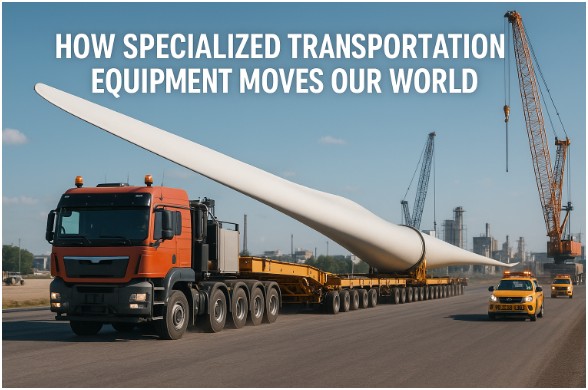Specialized transportation equipment is essential for moving large, unusual cargo like wind turbine blades, oversized construction gear, and hazardous materials.
It supports industries such as construction, energy, aerospace, and manufacturing by handling loads that standard trucks cannot. This guide explores the types, benefits, regulations, and future trends in heavy-haul logistics.
Types of Specialized Transportation Equipment
Heavy-Haul Trailers and Lowboys
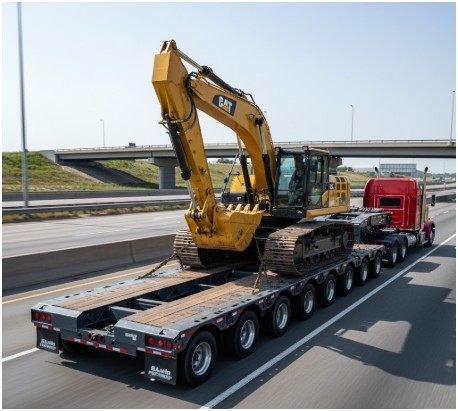
Heavy-haul trailers form the foundation of specialized transportation. Lowboy trailers, with their distinctive low deck height, excel at transporting tall equipment while maintaining safe clearance under bridges and overpasses. These trailers can handle loads exceeding 100,000 pounds and feature multiple axles to distribute weight effectively.
Multi-axle configurations allow operators to customize weight distribution based on specific load requirements. Some advanced lowboy trailers feature hydraulic systems that enable precise height adjustments, making loading and unloading more efficient.
Modular Trailers
For the heaviest and most complex loads, modular trailers provide unmatched flexibility. These systems consist of individual trailer modules that can be combined to create custom configurations.
Operators can link multiple modules to distribute extreme weights—sometimes exceeding 500,000 pounds—across dozens of axles.
Self-propelled modular transporters (SPMTs) represent the most advanced modular systems. These computer-controlled units can move in any direction, rotate cargo in place, and navigate tight spaces that would challenge conventional trailers. SPMTs are essential for moving massive industrial components like power plant turbines or ship sections.
Specialized Crane and Rigging Equipment
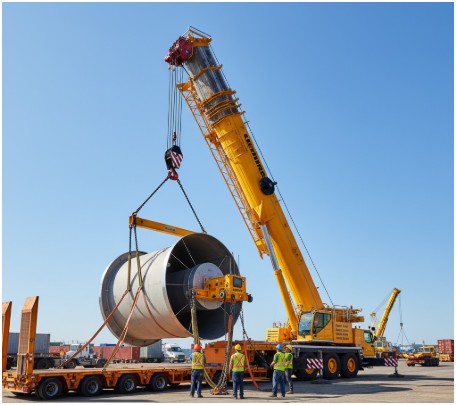
Moving heavy cargo requires more than just trailers. Specialized cranes designed for transportation applications include mobile hydraulic cranes, all-terrain cranes, and boom trucks.
These machines must balance lifting capacity with mobility to handle loading and unloading operations at diverse job sites.
Rigging equipment—from heavy-duty slings and chains to specialized lifting beams—ensures safe cargo securing.
Advanced rigging systems incorporate load monitoring technology to provide real-time feedback on weight distribution and stress levels.
Hazmat Transportation Equipment
Transporting hazardous materials demands specialized equipment designed to contain spills and prevent accidents.
Tank trucks with reinforced construction carry liquid chemicals, while specialized containers handle solid hazardous waste.
Some equipment includes secondary containment systems that capture potential leaks before they can cause environmental damage.
Oversized Load Escort Vehicles
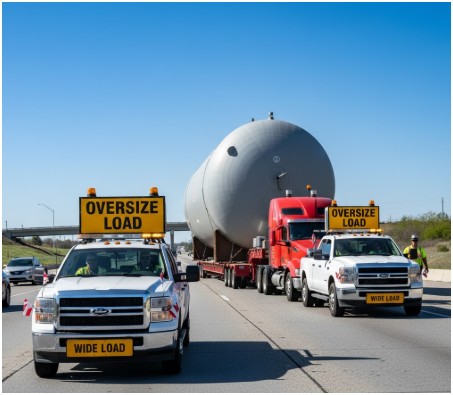
Safety regulations often require pilot cars or escort vehicles to accompany oversized loads. These vehicles carry warning equipment, communicate with the transport crew, and help manage traffic around the convoy.
Some states require certified pilot car operators with specialized training in route planning and safety procedures.
Benefits of Using Specialized Transportation Equipment

Enhanced Safety and Risk Management
Specialized equipment significantly reduces transportation risks compared to improvised solutions.
Purpose-built trailers distribute loads properly, reducing stress on both cargo and infrastructure. Advanced suspension systems minimize vibration and shock, protecting delicate equipment during transport.
Professional operators undergo extensive training in handling specialized equipment, understanding load dynamics, and emergency procedures.
This expertise proves invaluable when dealing with valuable or dangerous cargo where mistakes can have catastrophic consequences.
Improved Efficiency and Cost-Effectiveness
While specialized equipment requires higher upfront investment, it delivers superior efficiency for appropriate applications.
A shield hauler, for example, can transport tunnel boring machine components that would require disassembly and multiple trips using conventional equipment.
Reduced transport time translates to lower labor costs and minimized project delays. For construction projects operating on tight schedules, the ability to move large components in single loads can save weeks of project time.
Regulatory Compliance
Specialized transportation equipment helps companies meet increasingly stringent safety and environmental regulations.
DOT-compliant trailers ensure proper weight distribution to protect roadways, while certified hazmat containers meet federal safety standards.
Equipment manufacturers design their products to comply with various state and federal regulations, simplifying the compliance process for transportation companies. This built-in compliance reduces the risk of violations and associated penalties.
Expanded Capability Range
Specialized equipment enables companies to accept projects that would otherwise be impossible. The ability to transport extremely heavy or oversized items opens new market opportunities and revenue streams.
Companies with specialized capabilities often command premium pricing due to limited competition in niche markets.
Regulations and Compliance
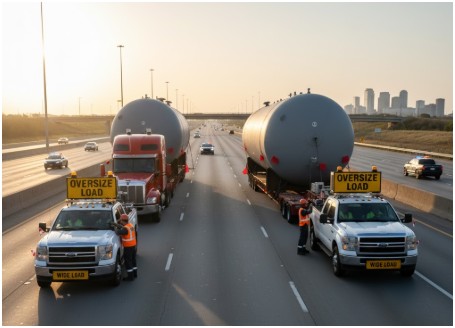
Federal and State Permit Requirements
Transporting oversized or overweight loads requires careful navigation of complex permit requirements. Federal regulations establish baseline standards, but individual states maintain authority over specific requirements within their borders. Some loads require permits from every state along the transport route.
Permit applications typically require detailed information about load dimensions, weight distribution, and proposed routing. Processing times can range from days to weeks, requiring careful planning for time-sensitive shipments.
Weight and Dimension Restrictions
Federal bridge laws limit axle weights to protect infrastructure, while individual states set maximum dimensions for width, height, and length. Loads exceeding these limits require special permits and may face route restrictions.
Understanding weight distribution principles becomes critical when loading specialized trailers. Improper loading can result in axle weight violations even when total weight remains within legal limits.
Safety Equipment and Procedures
Regulations mandate specific safety equipment for oversized loads, including warning lights, flags, and signs. Some states require escort vehicles or police escorts for particularly large loads. Operators must follow prescribed safety procedures for loading, securing, and transporting cargo.
Regular equipment inspections ensure compliance with safety standards. Many companies implement preventive maintenance programs that exceed regulatory requirements to minimize breakdown risks during critical transports.
Future Trends in Specialized Transportation Equipment
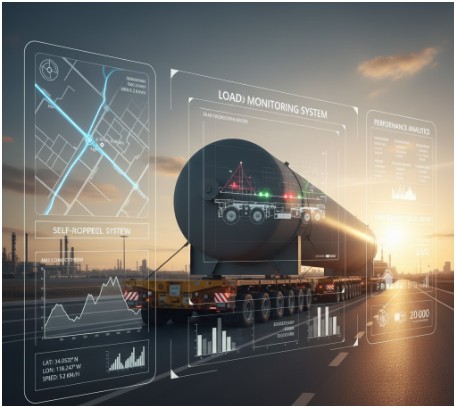
Technological Integration
Advanced technology is revolutionizing specialized transportation equipment. GPS tracking systems provide real-time location monitoring, while telematics systems collect data on equipment performance and maintenance needs. Load monitoring sensors can detect shifting cargo and alert operators to potential problems.
Automated systems are beginning to appear in specialized transportation. Computer-controlled SPMTs represent early examples of automation in heavy-haul applications, with further automation expected as technology advances.
Sustainability Initiatives
Environmental concerns are driving innovation in specialized transportation equipment. Manufacturers are developing more fuel-efficient engines and exploring alternative power sources like electric and hybrid systems.
While battery technology currently limits electric applications to lighter-duty equipment, ongoing improvements may expand electric options.
Route optimization software helps reduce fuel consumption by identifying the most efficient paths while considering load restrictions and permit requirements. These systems can significantly reduce both costs and environmental impact.
Modular and Adaptable Designs
Equipment manufacturers increasingly focus on modularity and adaptability. Trailer systems that can be reconfigured for different load types provide better return on investment by expanding utilization opportunities. Quick-change systems allow operators to modify equipment configuration rapidly between jobs.
This trend toward flexibility helps smaller operators compete by maximizing equipment utilization across diverse applications rather than specializing in narrow market segments.
Conclusion
Trailer technology and manufacturing are clearly moving toward greater efficiency, safety, and adaptability. These advancements benefit large trucking companies and manufacturers, and allow smaller operators to compete more effectively.














